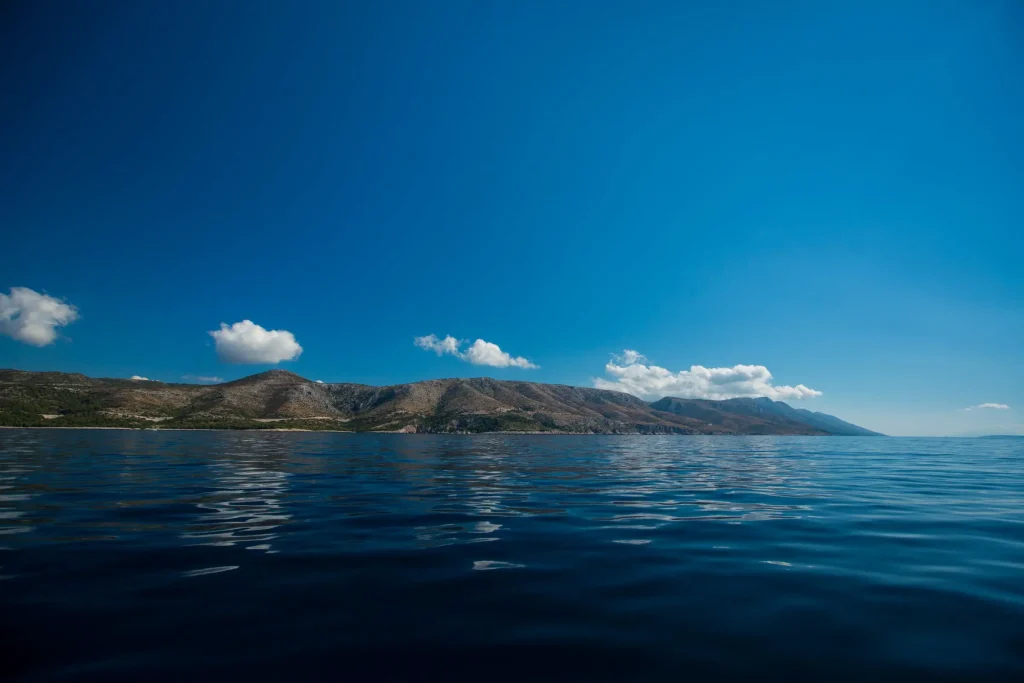As 24Sata writes, iron ship cannons, amphorae for the transport of wine and olive oil, ceramic vessels, and many other items are just some of the findings of the latest research on the seabed of the island of Hvar. The findings prove that Hvar was an important maritime center 3000 years ago, in fact, one of the “guardians” of traffic in the Adriatic Sea. Research of the Hvar seabed has been going on for decades, and the last one was conducted by the company Khantaros, along with the Art Academy of the University of Split which both specialise in underwater research. All was done with the support of the Split-Dalmatia County through the project “Maritime is good!”. According to everything that was found, Hvar was one of the important points for the control of maritime routes and the establishment of maritime dominance in the Adriatic and the eastern Mediterranean during late antiquity.
In certain positions that show the highest density and value of material archaeological research using a probe will continue, with expectations of finding extremely valuable archaeological artifacts. This research could provide key information about the history and archeology of Hvar and Dalmatia in general. 24Sata spoke about the details with the head of the research, Teo Katunarić Kirjakov, a senior lecturer at the Academy of Arts of the University of Split:
“Near the island of Šćedro, which means ‘Merciful Island’ in Old Slavonic, a real multitude of traces of life from all periods have been found. Šćedro has always been an island that has protected sailors in its safe harbours, from prehistoric times to the present day”.
However, the “Merciful Island” failed to provide a haven for a cargo ship with wine amphorae from the second or first century BC, which was caught in a storm and violently pulled to the seabed. Neatly arranged amphorae of the ship’s cargo still lie intact in the depths of the sea. It is the only fully preserved ancient shipwreck in the Split-Dalmatia County and as such we must preserve it, said Tea Katunarić Kirjakov and added that extremely valuable finds were discovered in the bay of Stari Grad:
“The bay of Stari Grad is deep and well protected from almost all winds, and people have lived along the shores of the bay since prehistoric times. And then in 385/384 BC the Greeks from the island of Paros founded a colony at the bottom of the bay of today’s Old Town and named it Faros”.
The Greeks not only significantly changed the appearance of the islands they occupied but also the appearance of the coast and the seabed of the bay. It is not certain what the seashore next to the town and the bay in front of it looked like in ancient times, but in the area of the Bonj bay, an artificial embankment along the rocky shore is visible. This is perhaps the most valuable and the only preserved part of the built ancient coast, as explained by Katunarić Kirjakov. Near the town of Sućuraj, in the far east of the island of Hvar, numerous valuable finds were also discovered:
“The eastern cape of the island of Hvar, Cape Sućuraj, and its deep well-protected bay was an unavoidable port in that waterway, while the oldest underwater find in the area is a Greek-Illyrian helmet from the fifth century BC”.
Finds from all periods have been recorded in the wider waters of Sućuraj, including a Roman shipwreck and a fighter plane from World War II – concluded Tea Katunarić Kirjakov, who went on to describe her personal experience of diving among objects hundreds and thousands of years old:
“It’s a magnificent thing. The most impressive find is the Roman shipwreck near Šćedro, where all artifacts have been completely preserved, unlike many other locations that were devastated. By the way, parts of a Roman villa with a breakwater are also being explored under the sea near Šćedro. It is possible that the Roman ship that sank near the island was sailing toward it. And when you dive in and arrive at that world of peace and quiet that you disrupted after two thousand years, it’s simply indescribable. We must preserve such locations, we must not allow their devastation, concluded Katunarić Kirjakov.
24Sata also discussed the latest research with Igor Mihajlović, a senior conservator and archaeologist at the Department of Underwater Archeology of the Croatian Conservation Institute, who researched several shipwrecks in the Hvar area:
“The most recent site currently being explored is a shipwreck in the Pakleni Islands, which can be dated to the 17th century.
Three large iron anchors, six iron cannons, fragments of glass cups, several specimens of maiolica-type ceramic vessels, and numerous items related to the ship’s weapons were found.
The interesting thing about this shipwreck is that the probe in the stern area found bone remains of a 170 cm tall man. Along with the bones, a bronze saint’s medal from Rome was found, with the image of St. Longinus piercing Jesus on the Cross. These findings indicate a sudden sinking of a ship caused by extremely bad weather or an attack by another ship.
An extremely rare find was collected from the site – a ship bell made of bronze. So far only four ship bells from the period from the 16th to the 18th century have been found, concluded Mihajlović.
For more, check out our lifestyle section.











